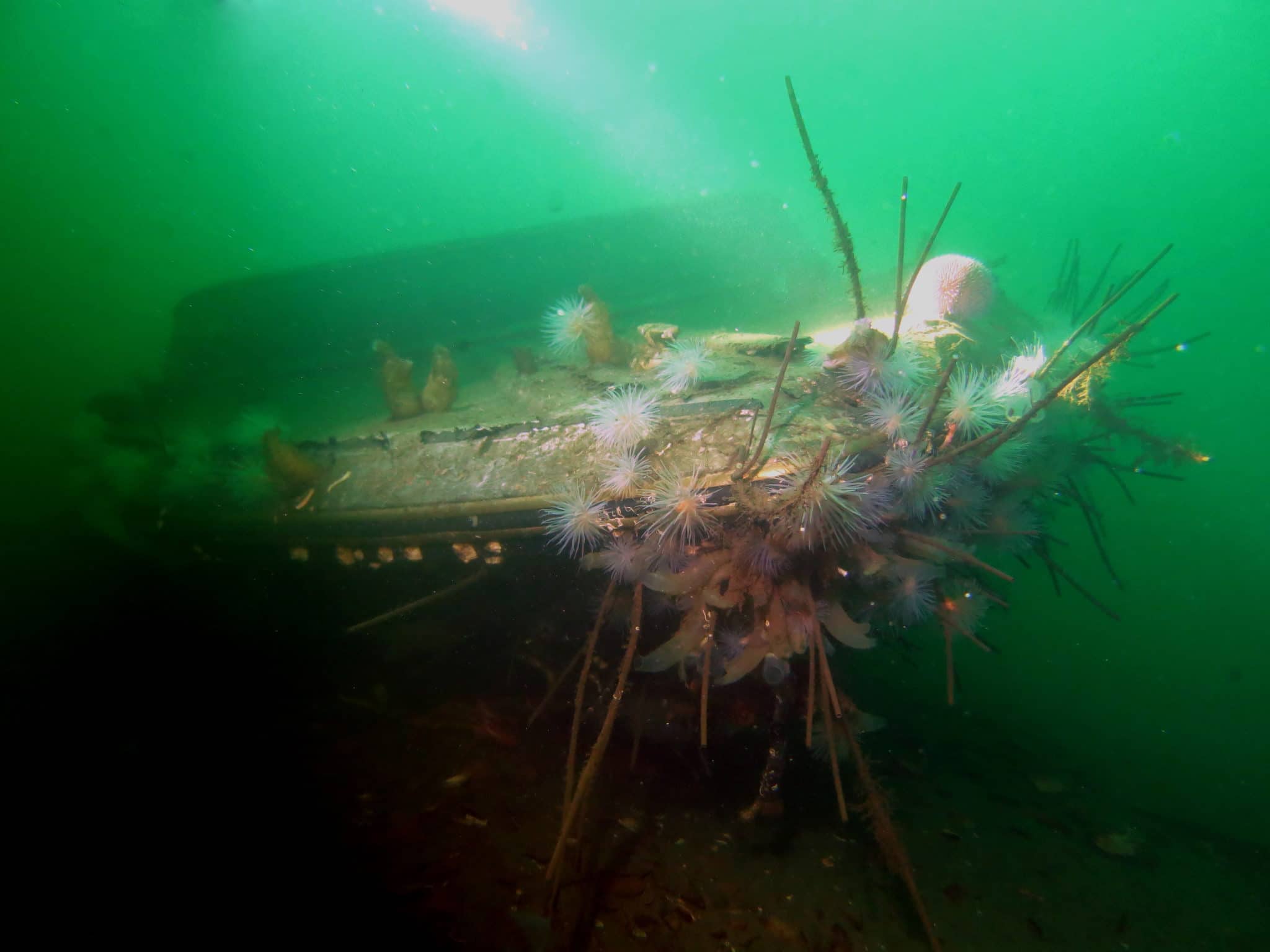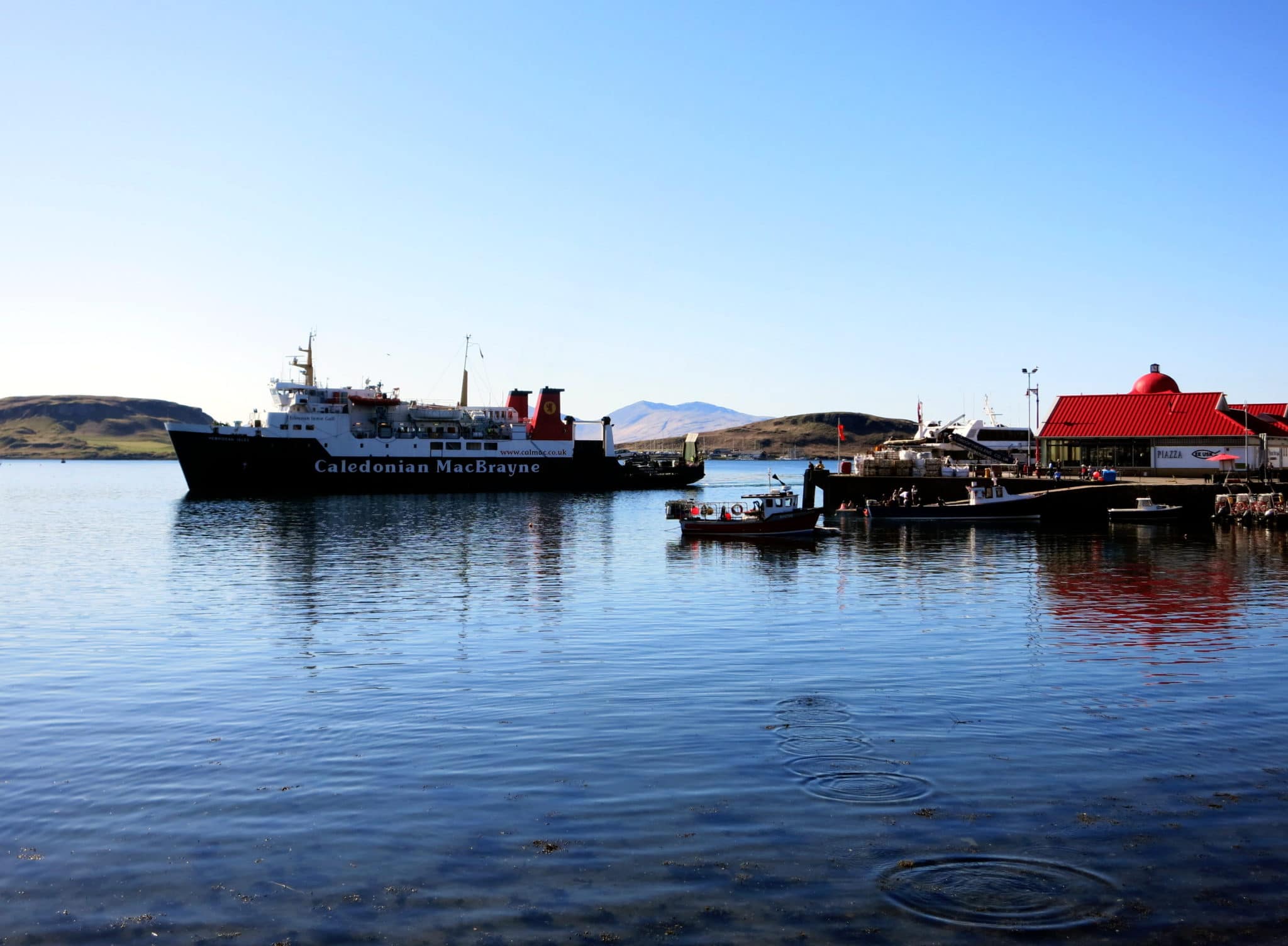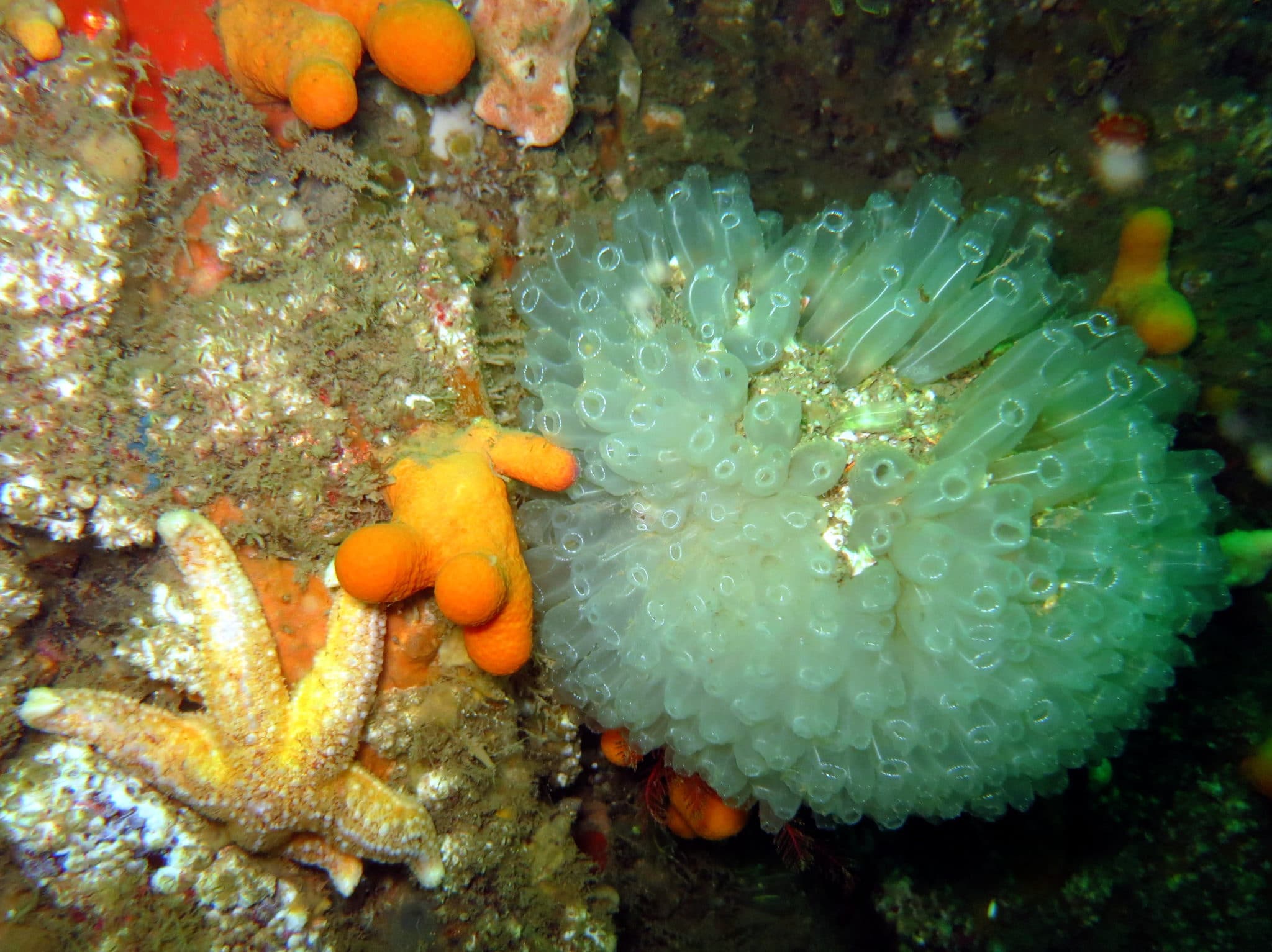This post may contain affiliate links. It means I may earn a commission if you book or purchase something. This is at no cost to you and support this website. Learn more here.
After travelling all around Scotland for two years while looking for the best scuba diving sites, including diving in Scapa Flow, here it is a one-week road trip itinerary showing in quite a short time the best glimpse of the Highlands. As it is a shore diving road trip, it means you only need a car and 2 tanks per person.
By scuba diving in Scotland, you can discover places that are off-the-beaten-path and only known by locals. My itinerary starts in Glasgow, an underrated city often forgotten from touristic tours. It is the closest city to the route, but also where you can find a dive shop to rent anything gear you need.
A 7-day itinerary to the best shore dive sites of West Scotland
Depending on how early you start every morning or how relaxing you want your pace to be, you can spend more or less time in each location. I give you some options in this article. By starting with 2 full tanks in Glasgow and refilling them twice in Oban, you can do the full itinerary on your own. The last day is a no diving day to let those flying back home doing it safely after a week of diving.
Day 1 – Glasgow

When visiting Scotland, most people usually prefer visiting Edinburgh. Yet, Edinburgh and Glasgow are very different cities: the first one is historically elegant and posh, the latter vibrant and cosmopolitan. Before going to the best dive shop I found for scuba diving supplies in Scotland, I thought you should have a look at a few of the Glaswegian highlights:
- The Cathedral & the Necropolis: This is where the medieval Glasgow started. The Cathedral was built in the 12th Century and extended, modified over the centuries. Just next to it, on a hill, stands the Necropolis: an impressive Victorian cemetery with a 360° view on Glasgow that reminded me a lot of Père-Lachaise Cemetery in Paris.
- The Merchants City: Symbol of the prosperous 18th Century when the merchants became wealthy with the trade of tea, sugar, and tobacco and decided to establish their warehouse and residence there. The streets are perfectly aligned between white and pink Victorian buildings. Stunning street art murals can be found all over the area, open your eyes and look up!
- Kelvingrove Museum: The Kelvingrove Museum is as I like to call it the Museum of Everything, from Egyptian antiquities to Marine Biology. My favourite part is the collection of Mackintosh Art Nouveau furniture and the impressionist paintings of the Glasgow Boys. Entrance is donation-based so it can be free if you want.
- The West End: All around Kelvingrove Museum is the trendy district of the West End where I loved going for dinner or just a drink. Expect true Scottish tradition mixed up with exotic flavours. My favourite places are Brewdog (1397-1403 Argyle St.) for a tasty Scottish craft beer, The Little Curry House (41 Byres Rd.) for traditional Indian food or fusion haggis pakoras, The Ox and Finch (920 Sauchiehall St.) for refined cocktails and Scottish “tapas”, The Hanoi Bike Shop (8 Ruthven Ln) for mouth-watering Vietnamese phö and home-made tofu, and finally The Crabshakk (1114 Argyle St), maybe the best fish and chips in Scotland.
- The SSE Hydro Arena & the Clyde Arc Bridge: This modern neighbourhood embody Glasgow’s new face and future. The light system transforms the concert hall and the bridge into pieces of art at night, perfect for a last walk after dinner.








With all these exciting things to do in Glasgow, do not forget to pick up your scuba diving gear at Aquatron Dive Shop (open Mon-Fri 10 am-6 pm, Sat 9 am-5 pm, 30 Stanley St., Glasgow, +44 141 429 7575). They have everything you need dry suits, tanks, weights, etc. I recommend to contact them before, to book what you need.
Day 2 – Arrochar & Loch Long

The first scuba diving spot on Loch Long is the A-Frame, only 45 minutes away from Glasgow. If anything goes wrong with your rental gear, you are close enough to go back to Glasgow. Otherwise, a bit further on the shores of Loch Long, I prefer Conger Alley and Twin Piers. If you took 2 tanks, you need to choose one of them to scuba dive in Loch Fyne on the way to Oban, where you can refill your tanks. Parking space is limited for each site, so an early start in the morning is recommended.
The most accessible dive site is Twin Piers, where the remaining frames of two long-gone piers can still be seen above the surface. Conger Alley is just a few hundred meters further before the curve going into the woods. Both dives are for a 15m maximum depth where you can find rock reefs colonised by soft corals and sea anemones, hermit crabs, queen scallops, shrimps, squat lobsters and congers.






The bottom of Loch Long is very silty, so you’ll need to use your best frog kick to swim around. The silt is so delicate that touching the bottom with only one finger will ruin your visibility. This is how I missed a fantastic shot of a fireworks anemone and a conger.
If you are lucky, before or after your dive, you might see adorable sea otters or the friendly grey seal the local scuba divers named Beryl.
You can stay for the night in Arrochar and leave early the next morning, or you can directly head to Loch Fyne to scuba dive in Saint-Catherine and then spend the night in Inveraray.
Day 3 – Saint Catherine & Loch Fyne

“St-Cats” as the local scuba divers call it, was my favourite shore dive of the Scottish sea lochs. I may have been incredibly lucky that day, but with bright sunshine and clear waters, I understood why so many people from Glasgow liked to drive all the way to stay for the weekend.
This area of Loch Fyne allows a slightly deeper dive, at around 20 m deep. If you swim 40° west from the shore, you will find the wreck of a speedboat covered in sea anemones where squat lobsters and butterfish play hide-and-seek with scuba divers.








Between the shipwreck and the rocky shore (by going 90° east), it is a muck diving paradise. I found a couple of spiny squat lobsters, a sea mouse and a dragonet with iridescent green and blue colours. While ascending along the rocky reef, I discovered more marine life with cushion stars, long-legged spiny crabs, and nudibranchs.
Day 4/5 – Oban & the Sound of Kerrera

Oban is on most visitors list when visiting Scotland, but only the scuba divers know which road is heading to the Sound of Kerrera and the tiny harbour of Gallanach.
Oban is a beautiful seaside resort where Queen Victoria liked to go to relax. Make sure to go up the hill to the McCaig’s Tower. It looks like a mini-Coliseum and offers a stunning view of the Island of Mull.
Walking the streets and along the pier of the ferry to Mull with a box of fish and chips seems to be the number one activity in Oban. From the harbour, you can take a boat for an hour-long tour to the nearby seal colony.








The Oban distillery is one of the rare distilleries to be in a town centre. Don’t miss the opportunity to discover how the Scottish golden water of life is made (and the Oban 14 is one of the best Highland single malt scotches).
I would like to recommend spending 2 nights in Oban, so you can enjoy the different activities, scuba dive in Gallanach and leave early morning on the third day for Loch Creran.
To find the single track road leading to Gallanach, you need to take the direction of the Ferry terminal. Don’t enter the terminal area on your right, go a bit further where you will find two possible routes to Druim Mor viewpoint and another little road with a road sign saying “Dive Centre.” I let you guess which one you need to take!
The ride is only 10 minutes from Oban centre and offers beautiful views on the shores of Kerrera Island. At the end of the road, you will find a large parking space with many divers already preparing their gear. This is also where you will find Puffin Divers, where you can refill your tanks.






The marine life in the Sound of Kerrera is closer to what you can see in open seas compared to the sea lochs as the Firth of Lorne is just behind the tip of Kerrera. Take the opportunity to scuba dive as much as you want as the compressor is just right next to you and then fill your tanks for your two last dives of the tour in Loch Creran and Loch Leven.
As an optional tour, especially in summer, you can take a dive boat trip directly from Oban or by going to Lochaline via Mull with the ferry. The Island of Mull is full of incredible places to visit such as TobermoryVillage, Iona Abbey, and the Fingal’s Cave.
Between mid-July and mid-August, you can also get a chance to swim with the basking sharks in the Sound of Mull or near the Isles of Coll and Tiree. Add at least 3 days to do this itinerary to do it.
Day 6 – Loch Creran & Loch Leven

After leaving Oban in the morning, be ready for a scenic drive in the direction of Fort Williams/Glencoe. The first highlight is the Connel Bridge. It allows you to go across the mouth of the Loch Etive and its Falls of Lora, tidal rapids forming powerful whirlpools.
Only 30 minutes away from Oban, you will arrive on the shores of Loch Creran. It is famous among marine biologists for its unique serpulid worm reefs. Once you have checked the worm reef on the right side, you can make a loop on the left side for some excellent muck diving. Loch Creran is a marine protected area so you need to be careful with your buoyancy and fin kicking.





Continuing on the road, you will pass Castle Stalker. Don’t miss the opportunity for a short walk to enjoy the landscape of the Scottish west coast with Castle Stalker on a tiny island in the middle.
Approaching Glencoe, you can find the last dive site of this road trip in Ballachulish (pronounce “Ballahoolish”). To arrive at the dive site of the Slates, you will need to turn left when you see the sign for the holiday cottages. If you see the village of Ballachulish on your right, you have gone too far!



You will quickly understand the name of this dive site as you park your car (space is limited so do your best to park in a civilised manner). The shores of this area of Loch Leven are indeed covered in slates.
The dive orientation is straightforward: you start on one of the banks of the tiny peninsula and then go around it to end on the opposite side. Check your depth properly as Loch Leven is much deeper than the other places. Many scuba divers come here for deep diving training.
The sights from Loch Leven on nearby Ben Nevis and Glencoe mountains are breath-taking. It is the perfect place to end a diving tour in the Highlands. After such a day, spend the night in Glencoe, to enjoy more of its wonderful landscapes on the following day.
Day 7 – Glencoe & Loch Lomond

I kept the best for the end. Glencoe was my favourite place in Scotland. To me, no place can embody better what the Highlands are about. No wonder why it has been used for so many famous movies including as Harry Potter, Skyfall or Braveheart.
From Glencoe, there are trails for all level of walkers. One important tip, the mountains of Glencoe can go as high as 1,150m of altitude, so if you did a deep dive the day before, make sure to stay within reasonable altitude (below 600m). In the valley, if you love walking in the woods, then the Signal Rock trail is perfect. Nice and easy, the location is strongly related to the history of Scotland due to the Massacre of the McDonald Clan in 1692.








I prefer to warn you, all along the road from Glencoe to Loch Lomond you will feel like stopping all the time to take pictures, so plan your day accordingly. Once in Crianlarich, by taking the A82 road, you will enjoy a scenic drive along Loch Lomond. Once again you can stop at many viewpoints, but if there should be only one, it has to be Luss.
The village of Luss has adorable small cottages along a small beach where kayaking addicts meet swans and a pontoon that offers incredible views of the islands of the Loch and the summit of Ben Lomond.
If you still have time before going back to Glasgow, why not visiting another distillery? Glengoyne Distillery, only 30 minutes away from Glasgow, claims to be the prettiest distillery in Scotland. Indeed, I loved their flower garden, waterfalls, and elegant tasting room.
When is the best season go diving in the Scottish Highlands?

If you want warmer weather and a chance to combine the trip with a basking shark snorkelling tour, it has to be in the first half of August. At that time of the year, you can enjoy mild weather, but the water will not be warmer than 12°C. Whatever the season, a drysuit is always recommended.
Other than that you can scuba dive these locations all year long. In February/March, the water is the coldest (6 to 8°C) but also the clearest. With outdoor temperatures close to zero, the water might be warmer than the air. On a beautiful Saturday morning in February, the outdoor temperature was -2°C, water at the surface was at 6°C, and at a depth of 12m, water was at 8°C!
My top tips to drive in Scotland

This itinerary cannot be done in another way than by driving your car or renting one. If you are not from the UK or any of the countries driving on the left, this is something you need to consider but not to be worried about.
I noticed many of my friends from Continental Europe were terribly worried about driving on the other side. As someone who was taught to drive on the right in France then learnt how to drive on the left in Ireland and Indonesia before driving daily for 2 years in Scotland, there is no big deal about it.
Take your time, follow the car in front of you and you will quickly see that everything is just mirrored. Be careful in crossroads when turning left, stay on your left! British roads are incredibly well organised with an overload of road signs; you are “kindly” guided to do everything you need to do on the road. If you think it could help you, don’t hesitate to rent an automatic car, they are popular in the UK.
I hope this itinerary will make you eager to explore Scotland. When I moved to Scotland, I wished I could have found such a summary, but I am happy to share the best tips from my two years in this beautiful part of the world that I can call one of my “homes” today.
Do you want to learn more about scuba diving and travelling to Scotland? Have a look at the following articles:
- Scuba diving in Scotland: challenge accepted!
- Shark diving in Scotland? Meet the basking sharks of the Sound of Mull
- Edinburgh diving: let’s explore the Firth of Forth
- A lucky last dive in St Abbs, Scotland
If you enjoyed this post, subscribe to WAD Newsletter to receive the latest posts directly into your inbox.
PIN IT FOR LATER




Thank you, really enjoyed your post. Scotland is where I first decided that I want to lean to scuba dive. It was a magical moment when I saw a group of scuba divers emerging from the water on the Isle of Skye. As soon as I got back to Australia, I got in the water. Haven’t dived in Scotland though, maybe one day.
Wow! Thank you so much for sharing this story. I wish one day you’ll be able to do it! I need to go to Australia too 😉
Thank you so much for sharing those incredible diving sites! I am planning a diving roadtrip once we’re allowed to travel in Scotland and my route will probably be much inspired by your tips!
I’m glad you liked it, and yes, scuba diving road trips seem like the best way to enjoy our passion at the moment!